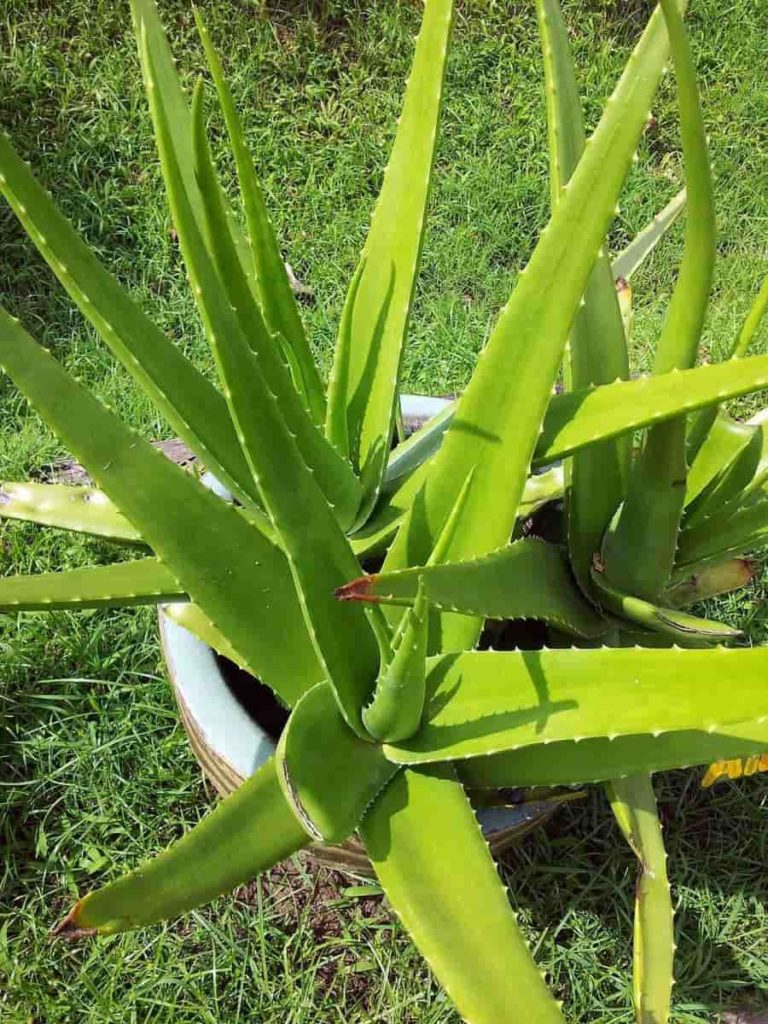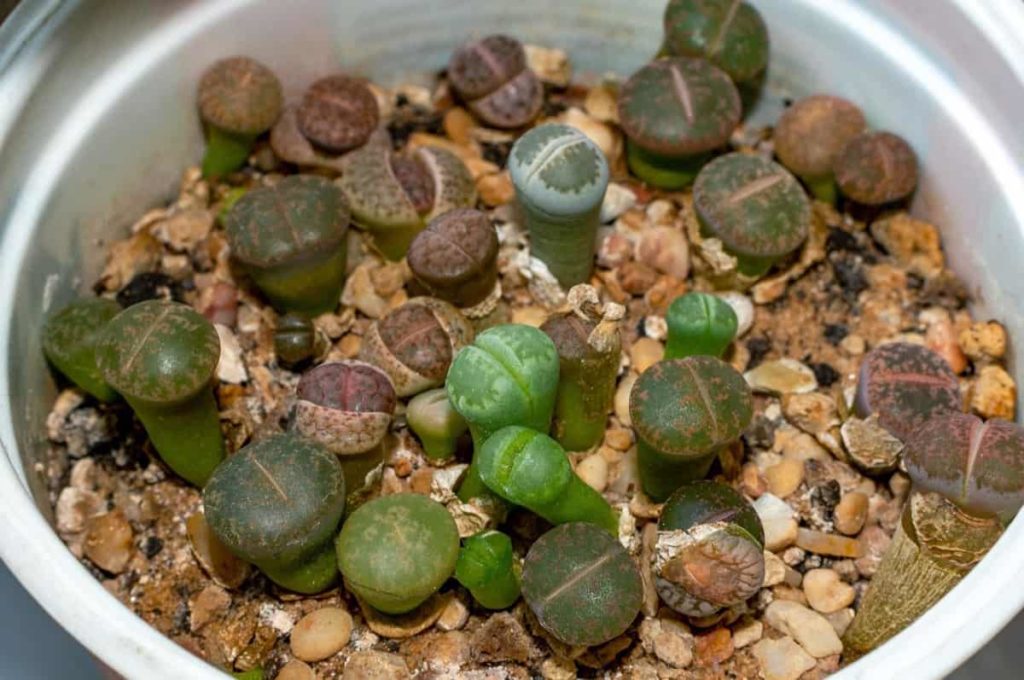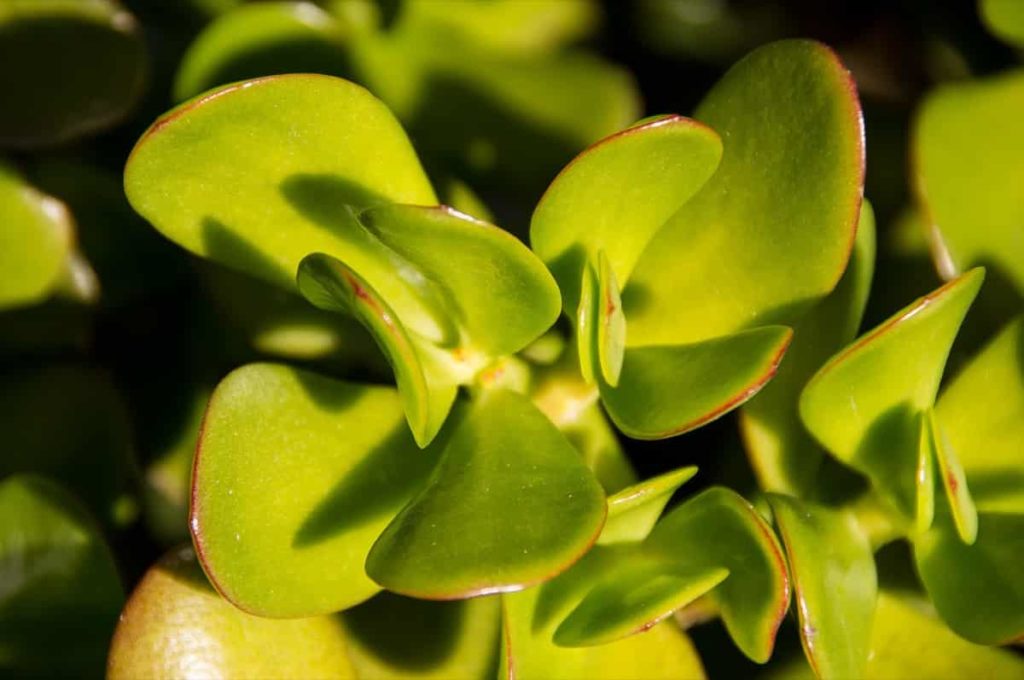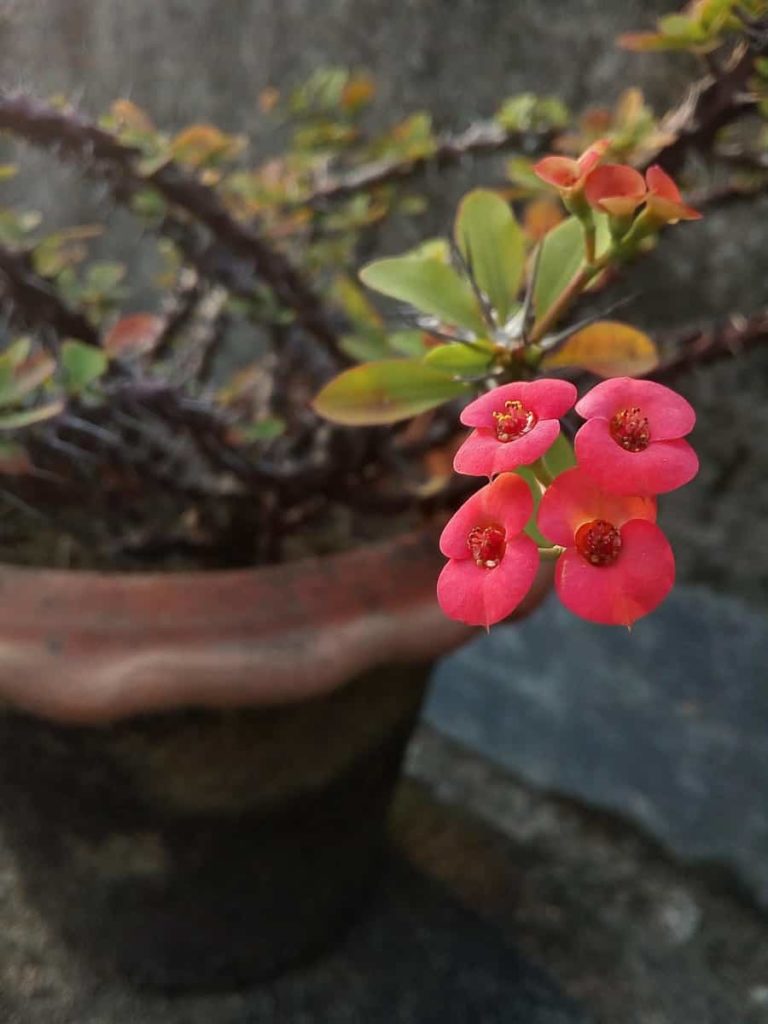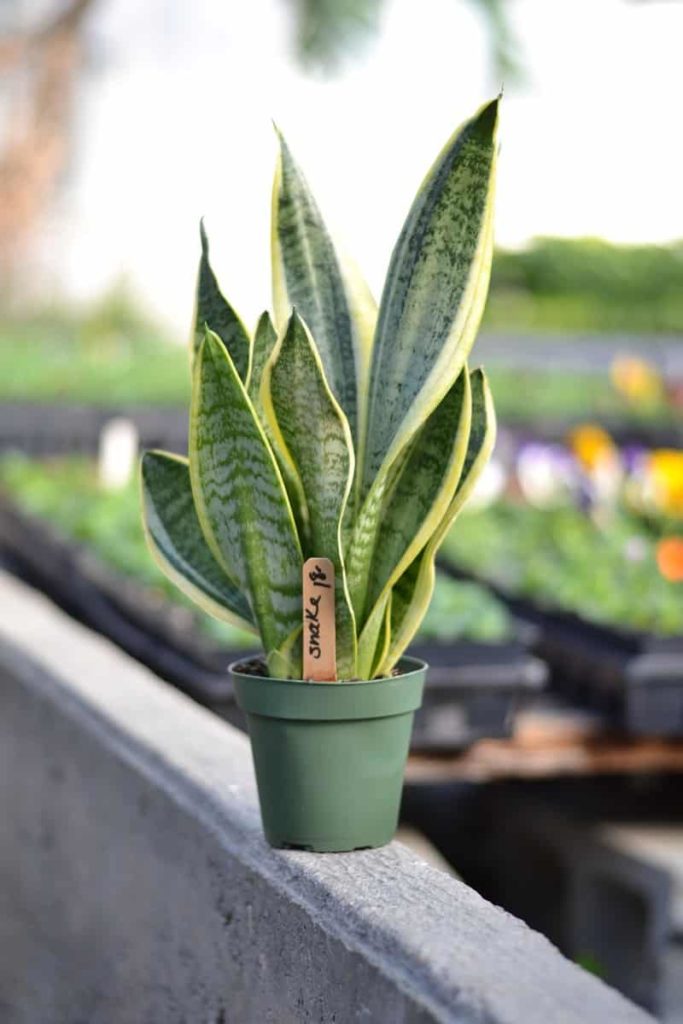Succulent plants have unusual shapes, rich textures, different colors, and bright flowers that dramatically affect any container or garden layout. Succulents have become very popular in the last few years, for a good reason. There are hundreds of unique varieties, including beginners; almost anyone can grow them.
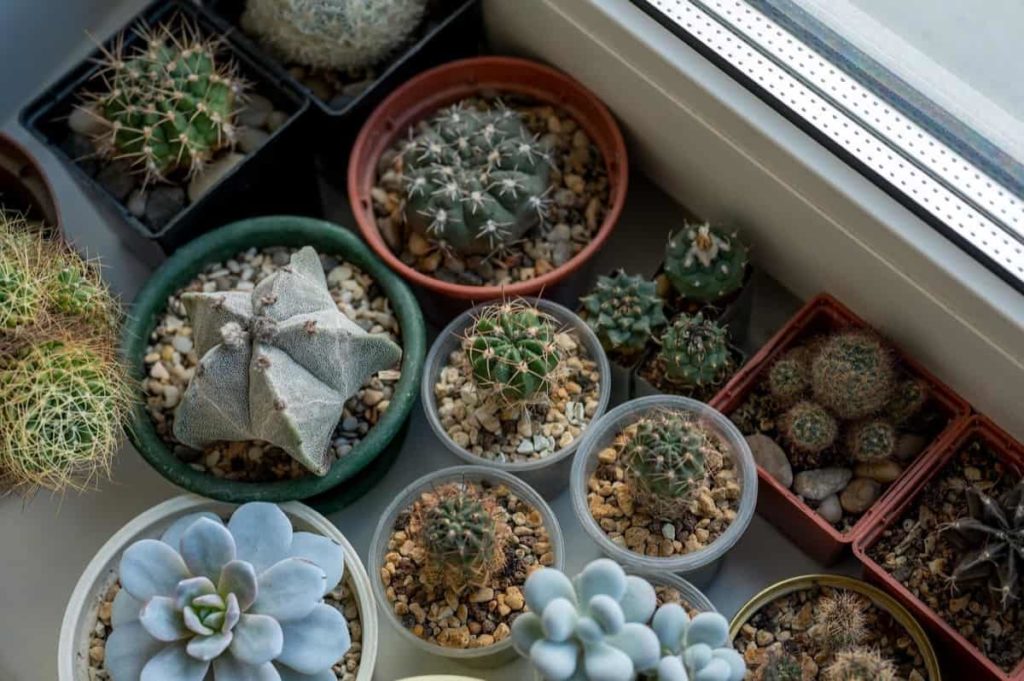
Succulents can survive on limited water resources, such as dew and fog, enabling them to withstand drought. Wide varieties and cultivars of Succulents belong to many plant families, and most people associate Succulents with Cactaceae, the cactus family. Succulents are very popular plants. They have beautiful shapes and colors, and they withstand drought. Let’s check out the top 22 Succulents to grow at home below.
Different benefits of growing Succulents in your garden
- They can grow in extreme weather conditions and do not require much water.
- If the sun’s rays are good, then there is no need to take care at regular intervals.
- It comes in different sizes, shapes, and colors, and you can easily choose from all the options.
- Both indoor and outdoor Succulent types are available.
Succulents care to grow in pots
Succulent does not require very large pots. Drainage is crucial when choosing a planter/container for your Succulent. Succulent planters should have a large drainage hole for immediate drainage after watering. Another factor contributing to this is the potting mix, which we will discuss later.
It would help if you consistently watered them towards the roots and not from above to avoid calcium stains on their plants or branches. However, do not water the plants too much or too little as it may stop their growth. For the best-looking container garden in pots, think Succulent. These fleshy leafy plants thrive in the simplest pots, and their endless shapes and colors provide endless opportunities for creativity.
The plants we call Succulents include Sempervivums, Sedums, Aloes, Kalanchoes, Echeverias, and other species with fleshy leaves. These plants grow on the earth in some of the most difficult conditions, and when they grow in the hot sun and poor soil, they are actually in their best condition. Therefore, it is easy to take care of your Succulent garden. They will be happiest in full sun, bringing color to their plants.
When you grow Succulents in pots, they need to be watered more often than those that grow in the ground. However, since these plants require less water in the first place, container gardening with Succulents is a good choice, especially for those who forget about water. Grow Succulent plants successfully in pots in fast-draining soil. Pots with good drainage, preferably large holes or more, are the best for container gardening with resin.
Breathable terracotta or clay containers contain less water than glass or ceramic pots. Succulent roots can rot quickly if they stay wet for any time, so grow them in a soil mixture that allows water to drain out of the pot. Shallow containers flow faster for Succulent potted plants. Carefully watering the Succulents growing in the container will vary from season to season. When the plants are indoors in winter, almost no water is required. However, when they go out in the spring and start growing, water needs can be weekly.
Tips for growing Succulents in a greenhouse
Growing Succulents in the greenhouse are different from growing other plants in this environment. You want to add a greenhouse or use an existing one to grow Succulents. You can also add something to sell. Greenhouse rain is the best way to keep plants from getting too wet. It is a great way to organize and identify your Succulents. A warm greenhouse can keep them alive during the winter if you are in freezing temperatures below months.
If you keep adding Succulents to your collection and there is not enough space in your home to display them, greenhouse storage is a great option. Succulents need to be completely dried between waterings. They need less water in autumn and winter. Succulent is a popular houseplant and is often grown indoors, but many gardeners do not have the right indoor environment for Succulents to flourish. Many species need a lot of light, and not everyone has enough window space in their home.
Greenhouses allow growing Succulents outside while controlling their water and light levels. If you are a Succulent lover who lives in cold or wet climates, it may be impossible to grow resin outside without a greenhouse. However, with a greenhouse, your precious plants are protected from the potentially harmful effects of Mother Nature. A warm greenhouse can easily provide the perfect environment to keep your Succulents alive, regardless of the weather.
Creating an area of your greenhouse that can protect your plants with a simple shaded fabric is a simple process for species that need to be protected from the full sun. As far as temperature is concerned, this is where greenhouses come in handy. Some types of temperatures are hard enough to withstand temperatures below freezing. In a greenhouse, specially equipped with a heat source, your Succulents can stay warm and comfortable no matter the weather or season.
Tips for growing Succulents indoors
Choose the right Succulent for your home. Most Succulents grow in direct sunlight, but if you have a shady corner in the house, go with low-light tolerant plants like Mother-In-Law Tongue. If you plan to grow your Succulents in a hanging planter, a trailing variety like a string of bananas is a great choice.
Always read plant labels to determine sunlight requirements, size, and spread of your Succulents. Then, use a balanced, water-soluble fertilizer diluted to half the strength recommended on the package instructions. In winter, Succulents do not need to be fertilized when they are semi-dormant; they do not need to increase nutrition as they are not actively growing.
Top 22 Succulents to grow at home
The following Succulents come in a wide range of species, subspecies, and various colors, shapes, and textures.
Burro’s Tail
Burro’s Tail or donkey’s tail (Sedum morganianum) is a trailing Succulent that looks best in a hanging basket or container sitting on a ledge, shelf, or plant stand so it can drape over. Also known as the donkey tail plant, this Succulent plant is one of the easiest plants to propagate and care for, making it a popular houseplant.
The Burro’s Tail was so named because it was about four inches long, resembling a single tail. This Succulent grows best indoors, kept in a well-dried container, where its long stems can fall off the edges of the pot.
Yucca
Yucca is an extremely hardy plant, adapted to a wide range of soils and climates; and grows slowly and tolerates drought.
Christmas Cactus
Unlike other cacti, the Christmas cactus (Schlumbergera x buckleyi) does not have a sharp spine. Its flattened, fleshy, segmented stems can grow to a foot or two in length.
It also prefers slightly higher humidity than its spiky kin, so water the top of the pot whenever the top inch of soil is dry. But if you forget to water it for a while, it will come back easily with a little drying. Please keep it in bright light near a window; this plant will probably open up in the winter and reward you.
Aeonium
Aeonium, aka houseleek, gives a showy rosette. The stems may be of wood, and some species may be over three feet high. It grows year-round in Zones 9-11. Flowers appear from late winter to spring and are usually yellow or white. They can be long, multi-open cones or diffuse drifts of small flowers.
Agave
Agave is a hardy evergreen Succulent, up to 4 feet long, forming a large rose of narrow stiff leaves along the middle spine. They are slow-growing plants that stand out in the landscape.
Aloe vera
The most popular aloe vera is the most famous in this group of indoor Succulents. Aloes can also produce yellow, orange, pink, or red tubular flowers on long stems in spring and summer, although they are often reluctant to bloom when grown indoors. To ensure a healthy aloe vera plant, allow the soil to dry between waterings.
In case you missed it: Organic Aloe Vera Farming – Production, Cultivation
Furcraea
Furcraea is an evergreen Succulent without a hard stem, suitable for most of our climatic zones, from hot, dry to humid tropics. Grown for their brightly colored plants, they are 5 feet tall. They form a fountain of straight, sword-shaped leaves, resembling an undivided ribbon.
Pencil cactus (Euphorbia tirucalli)
Pencil cactus has become one of the most popular Succulent houseplants in the last few years. It can grow up to 6 feet tall indoors and look very different. Houseplants such as fiddle leaf figs can reach such heights.
Hens-and-Chicks
Hens-and-Chicks are another large Succulent group of plants for indoor gardening, forming flat flower-shaped rosettes with rounded edges. These plants must be slightly dry between waterings as too much watering can cause rot. Two Succulent plants have a common name, Hens-and-Chicks. They are closely related but look a little different. These two Succulents come in all sorts of different shapes and colors, so it’s a lot of fun to combine them.
Lithops
Lithops are unique, small, indistinct, Succulent plants that look like rocks or pebbles. Growing lettuce is very easy and does not require much care.
In case you missed it: How to Prepare the Soil for Organic Farming: Methods, Tips, Techniques, and A Step-by-Step Guide for Beginners
Aeonium
These amazing indoor Succulents include the tall Aeonium arboreum, which produces leafy rosettes on strong branches and can grow up to 3 feet (1 meter) in height (roughly classified as a small indoor tree). As well as small, wide plants, such as Dinner Plate Aeonium and Aeonium Tabuliforme.
The colors of the leaves range from pale green to orange-red and dark burgundy, and mature plants can produce star-shaped flowers from late winter to early summer. Their basic growth period is from autumn to late spring, and plants can be semi-dormant in summer when they prefer to stay outside, where high humidity prevents their leaves from withering.
Pachyphytum
The smooth round leaves of moonstones look like sugar almonds and combine with pink and purple aquariums to create a beautiful contrast. Or, for a more delicate grouping, combine them with the Pachyphytum bracteosum, which forms a rosette of teard-shaped leaves with the same fine silvery-blue color. Water from spring to autumn, when the top of the manure feels dry, keeps the plant almost dry in winter. Fertilize half the strength of the cactus once in the spring.
Jade plant
This long-lived South African native grows with thick, shiny green leaves with thick, branched stems that sometimes turn red around the edges when grown in full sun. The key to keeping the Jade plant happy is to allow the soil to dry completely in the middle of the water. Some gardeners water only when the leaves begin to burst or lose their luster, but this is a sign that the plant is already under pressure. If you wait that long, the leaves may start to fall off.
In case you missed it: How To Start Jade Planting, Tips, and Ideas
Zebra Plant
The zebra plant can grow up to five to six inches tall and wide. It doesn’t take up much space and doesn’t require much care, so it works like a houseplant. The zebra plant is named after the white stripes on its leaves. These beautiful leaves point in different directions from its trunk. This plant’s roots are shallow and best grown in small pots. The zebra plant produces bright yellow, cone-shaped flower heads that last about a week.
Echeveria
Perhaps the most widely planted Succulent, Echeveria, which comes in different varieties, is very popular for its rose-shaped fleshy leaves that come in a rainbow of colors. Echeveria absorbs heat easily, and its grays and blues cool the garden shape. Echeverias are low-maintenance indoor plants that flower confidently, producing lantern-shaped orange, red or pink flowers on long stems in spring and summer, and can be taken out and frosted in spring.
Water the indoor Succulent from spring to late summer when the top of the compost feels dry, and feed once a month with a half-strength balanced liquid fertilizer during the same period. Reduce watering in autumn and winter; apply enough to prevent leaf rot.
Crown of thorns
Add a splash of color to your room with this beautiful plant. With plenty of sunlight, it can bloom all year round, producing red or yellow patches around its small flowers. The crown of thorns requires less to moderate watering and should be exposed to direct sunlight for best flowering results.
In case you missed it: Growing Madras Thorn – Planting Tips, and Ideas
Adenium
Adeniums are an attractive choice for adding a spray of color to the garden flowers that bloom for several weeks in pink in the spring and summer months.
Lithops
Tiny living stones (Lithops) are one of the easiest rescues for indoor care; their pair of squat stemless leaves rarely need water, even in summer. Similar to small patterned pebbles, these indoor Succulents come in various colors, from light gray to olive green and blue-gray.
White or yellow daisy flowers appear between the leaves from summer to autumn and may have a scent. Likewise, from spring to autumn, when the top 3/4 inch (2 cm) of compost feels dry, water, and does not water in winter. Apply half-strength cactus fertilizer once in the spring, which will encourage flowering.
Panda plant
There are dozens of species of Kalanchoe plants, but Panda Plant (Kalanchoe tomentosa) is quite specific. Madagascar’s native panda plants have faint, gray-green leaves that are soft, covered with silver hairs, and covered with brown or rusty spots. They can grow up to about two feet tall like a houseplant, but they grow very slowly. Please give it a bright light from the window, and let the soil dry between the water. When you water the plant, ensure no one touches the leaves; otherwise, they may rot.
Senecio
Senecio is a fast-growing Succulent whose vines can grow up to 3 feet in length. Once established, they tolerate extreme drought with small, white, cinnamon-scented flowers.
Sedum
Sedum is known for its dense, soft plants that become heavier as they mature. It looks great on a planter with beautiful soft blue-green leaves. They like bright shade or partial sunshine and grow just as well indoors.
Snake plant
This classic Succulent houseplant seems almost indestructible. It can survive for weeks without light and water and without losing its beauty. Their thick, hard, pointed leaves grow straight up, about three feet long, and often have patterned markings reminiscent of snakes. Over time, it will grow into a thick lump that fills the entire vessel, but it is easy to split and redistribute as needed. While snake plants tolerate low light, they look best in moderate to bright light. Whenever the soil feels dry, they also appreciate a little water.
In case you missed it: Snake Gourd Cultivation Income, Cost, Project Report
Most common problems for growing Succulents
Over-watering: When it comes to watering, less is always more. If you give them too much water, the plants will rot. Succulents don’t like to stay in the water too long – that’s the only way you can kill them. Water your Succulents when their soil has been completely dry for several days.
Bad soil: Soil is the number one killer of Succulents. So that it does not dry out too quickly and then the Succulent rot. The best soil for these plants is filled with a quarter of an inch of particles and drains quickly.
Poor drainage: Succulents work best at this time. When their roots dry out quickly, if you move your solvents into containers without drainage holes, they can sit in the water longer and then rot or die.
Lack of light: When Succulent does not get enough sunlight, they will experience ataxia, which causes long and weak stems, differences in petals, lack of color, and a leggy look. Keep them near a window daily, receive at least six hours of direct sunlight, or invest in indoor grow light.
Commonly asked questions about Succulents
Can you start Succulents with seeds?
Yes. Succulent seeds can be started indoors but grow more slowly and usually do not reach transplant size from six months to one year after germination.
Why are my Succulent leaves falling?
In Succulent plants, the lowest leaves on the stem (closest to the potting mix) eventually shrink and fall off. The top leaves are dying, indicating excess water, pests, or disease.
Do they do better in Succulent pots or on the ground?
All Succulents need proper drainage to prevent root rot. No matter where you plant your Succulents, you have to ensure that they are planted in the right kind of soil and that there is a way to get more water out of it. The benefit of Succulents in containers extends to the soil.
Do Succulents need full sun?
Succulents like light and need about six hours of sun daily, depending on the Succulent.
Conclusion
Succulents come in all shapes, sizes, and colors, and while most are grown for their leaves’ interest, they can produce some beautiful flowers under the right conditions. Succulents also thrive in dry air and hot temperatures, which are already present in most homes, so you do not need to change anything to grow them in your room. The above information helps grow the best Succulents to grow at home.
- Types of Pesticides Used in Agriculture: A Beginner’s Guide
- Economical Aquaculture: A Guide to Low-Budget Fish Farming
- 15 Common Planting Errors That Can Doom Your Fruit Trees
- How to Make Houseplants Bushy: Effective Tips and Ideas
- Innovative Strategies for Boosting Coconut Pollination and Yield
- Pollination Strategies for Maximum Pumpkin Yield
- The Complete Guide to Chicken Fattening: Strategies for Maximum Growth
- Natural Solutions for Tulip Problems: 100% Effective Remedies for Leaf and Bulb-Related Issues
- Revolutionizing Citrus Preservation: Towards a Healthier, Greener Future
- Natural Solutions for Peony Leaf and Flower Problems: 100% Effective Remedies
- Maximizing Profits with Avocado Contract Farming in India: A Comprehensive Guide
- Natural Solutions for Hydrangea Problems: 100% Effective Remedies for Leaf and Flowers
- The Ultimate Guide to Choosing the Perfect Foliage Friend: Bringing Life Indoors
- From Sunlight to Sustainability: 15 Ways to Use Solar Technology in Agriculture
- The Ultimate Guide to Dong Tao Chicken: Exploring from History to Raising
- The Eco-Friendly Makeover: How to Convert Your Unused Swimming Pool into a Fish Pond
- Mastering the Art of Delaware Chicken Farming: Essentials for Healthy Backyard Flocks
- 20 Best Homemade Fertilizers for Money Plant: DIY Recipes and Application Methods
- How to Craft a Comprehensive Free-Range Chicken Farming Business Plan
- Brighten Your Flock: Raising Easter Egger Chickens for Beauty and Bounty
- How to Optimize Your Poultry Egg Farm Business Plan with These Strategies
- Subsidy for Spirulina Cultivation: How Indian Government Schemes Encouraging Spirulina Farmers
- Ultimate Guide to Raising Dominique Chickens: Breeding, Feeding, Egg-Production, and Care
- Mastering the Art of Raising Jersey Giant Chickens: Care, Feeding, and More
- Ultimate Guide to Raising Legbar Chickens: Breeding, Farming Practices, Diet, Egg-Production
- How to Raise Welsummer Chickens: A Comprehensive Guide for Beginners
- How to Protect Indoor Plants in Winter: A Comprehensive Guide
- Ultimate Guide to Grow Bag Gardening: Tips, Tricks, and Planting Ideas for Urban Gardeners
- Guide to Lotus Cultivation: How to Propagate, Plant, Grow, Care, Cost, and Profit
- Agriculture Drone Subsidy Scheme: Government Kisan Subsidy, License, and How to Apply Online
- Ultimate Guide to Raising Araucana Chickens: Breed Profile, Farming Economics, Diet, and Care
- Bringing Hydroponics to Classroom: Importance, Benefits of Learning for School Students
- Ultimate Guide to Raising Polish Chickens: Breed Profile, Farming Economics, Diet, and Care
- Ultimate Guide to Raising Australorp Chickens: Profile, Farming Economics, Egg Production, Diet, and Care
- Silkie Chicken Farming: Raising Practices, Varieties, Egg Production, Diet, and Care
- Sussex Chicken Farming: Raising Practices, Varieties, Egg Production, Diet and Care
